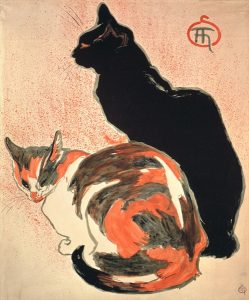At St Peters House, we’re lucky to have many interesting and unusual items in our Special Collection, however due to their often rare/fragile nature, they’re kept in closed access conditions behind the issue desk and so are not as easily accessible as we’d sometimes like. Being able to use items from the special collection in teaching is great as it allows us to raise awareness of the collection amongst students and staff that use the library.
To this end, I worked with first year sculpture tutor Leah Capaldi to devise a session for her students using material in the special collection. As part of their end of year assessment, students are required to bring together documentation (e.g photographs, recordings, texts) all of the work they have produced over the course of the year. Documenting the work you make is an important part of your time at art school and a good skill to develop for your practice beyond it. Leah was keen to get them thinking about ways they could make their documentation more interesting than a simple portfolio, and thought that showing them some items from the special collections could give them some inspiration. The following material was shown to the students:
Ed Ruscha- Twentysix Gasoline Stations and Thirtyfour Parking Lots in LA

‘Twentysix Gasoline Stations’ by Ed Ruscha
Leah had mentioned that often students tended to see the modes of presentation they used (e.g. a book or a portfolio) as just the vehicle for displaying their documentation, and wanted to get them to think more about how the content and format could be more interlinked. In this respect I thought showing them the Ruscha books was useful. For the first edition of Twenty-Six Gasoline Stations, Ruscha printed 400 copies of the book, and sold them in a wide range of places. The prints in the book could have had been large format, and hung on a gallery wall, and then reproduced in a lavish but expensive monograph at a later date, but instead Ruscha chose the book as an attempt to disseminate his work more widely. As such the format of the book becomes part of the work itself rather than just a mode of display.
Not Yet the Times
As an example of newsprint as a material that could be used for presentation.
2398 gr.: a book about food
This exhibition catalogue is housed in a takeaway container and was selected as a way of getting students to consider using existing packaging/packaging created for other purposes to house their documentation.
Franticham’s assembling box nr 28: visual poetry and Fluxus inspired works from 23 artists from 9 countries
Shattered Anatomies: Traces of the Body in Performance
John Dilnot: 1995 Books

Inside ‘Shattered Anatomies’
Using a form like a box also allows for wide range of documentation (including 3D objects) to be incorporated. The Shattered Anatomies box is of particular interest at it contains a varied range of documentation from artists who took part in the exhibition, and documents performance art, which can be hard to capture in more interesting ways. Dilnot’s box of books is also a good example of collecting a body of work together.
Josef Beuys: Multiples: Oeuvreverzeichnis sämtlicher multiplizierten Arbeiten: Objekte, Grafik, Postkarten, Schallplatten, Filme
Josef Beuys produced an incredibly varied range of work throughout his life, and I thought the way documentation of this was gathered in these two binders was a nice example.
Future Fantasteek Zines by Jackie Batey
Leah said that often her students were concerned with the cost of producing documentation, so I thought it might be useful to show the students something that was created on a low budget to show that there are other less costly options open to them.
Mapping Knowledge- Les Bicknell
Fair Use Notes From Spam- Graham Parker
Marysa Dowling: Selected Projects
These items were selected as they comprise of multi-volume works and this could be a useful format for students to think about using, as it could allow them to incorporate further documentation to the original documentation over time in a consistent format.
The Session
As part of the first year of the course, Leah runs ‘breakfast club’ sessions on Monday, which feature activities such as guest speakers, work in progress crits, film screenings. We decided this session would operate as one of these sessions, and so it functioned like a studio based crit, facilitated by Leah where students looked at the material and considered their own work and documentation in that context. The following issues were discussed:
- The form of the book as being more than just a way to display your work.
- Using a form of documentation you can ‘grow’ and add to.
- How to document time based image work (video, film, animation etc) in 2D.
- Incorporating texts into documentation.
- Documenting your work online compared to documenting your work in print.
- How to find material in the special collections using the library catalogue.
- Cost effective documentation.









